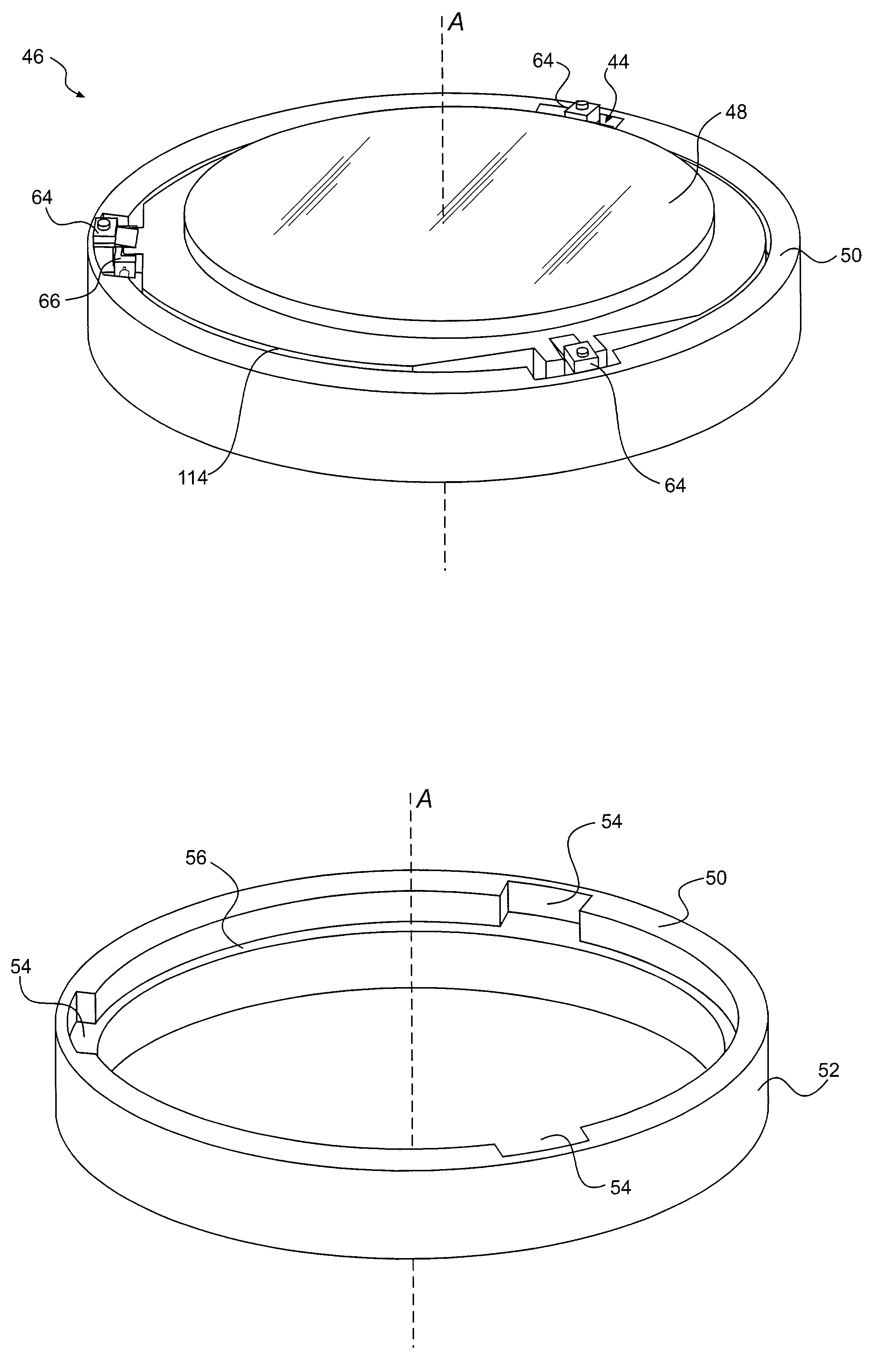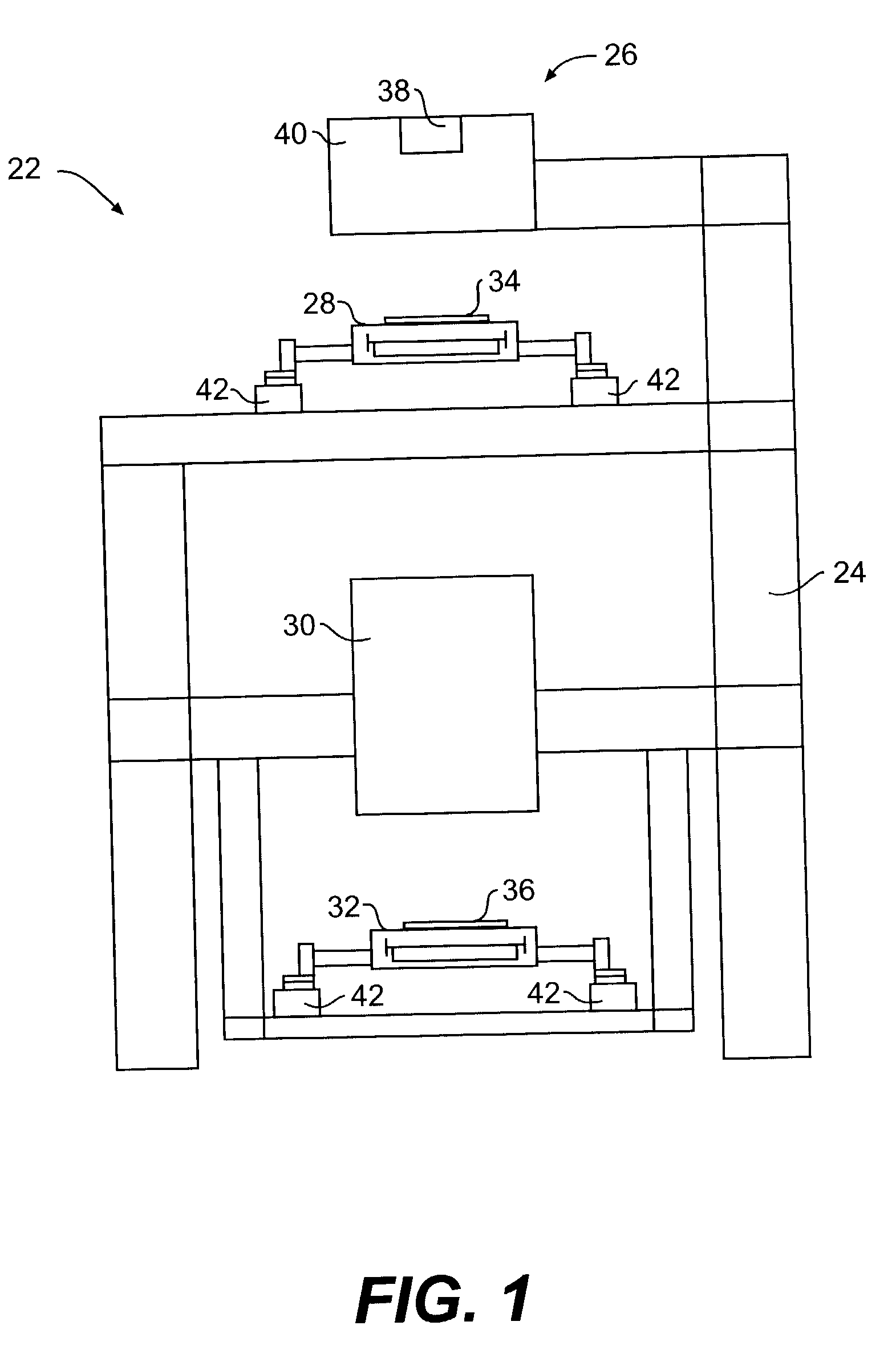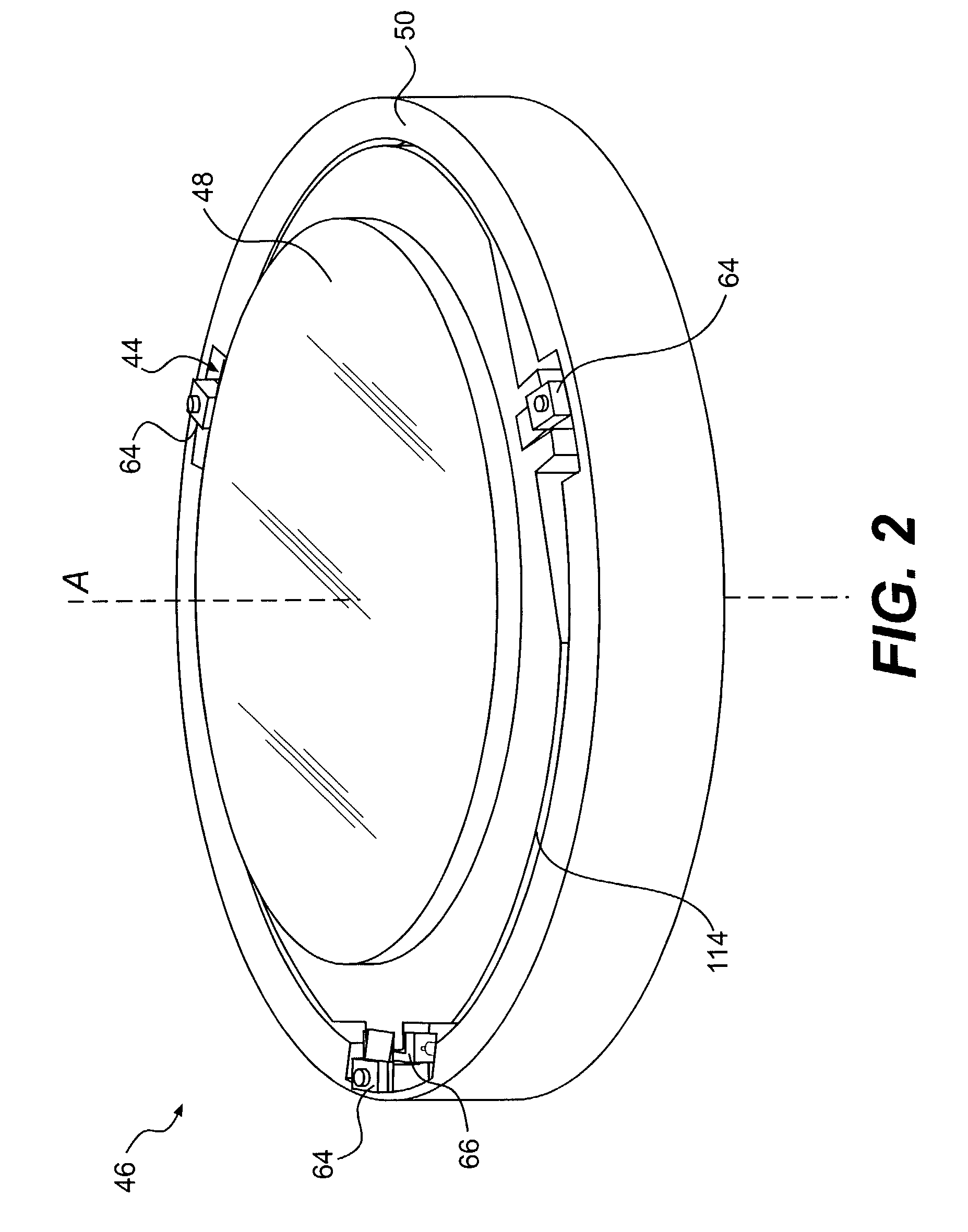Kinematic optical mounting assembly with flexures
a technology of mounting assembly and kinematics, applied in the direction of mounting, optics, instruments, etc., can solve the problems of affecting the exposure process, affecting the effect of the mounting assembly, and releasing gas that could harm the environment of the cell assembly
- Summary
- Abstract
- Description
- Claims
- Application Information
AI Technical Summary
Problems solved by technology
Method used
Image
Examples
Embodiment Construction
[0030] Reference will now be made in detail to several exemplary embodiments of the invention that are illustrated in the accompanying drawings. Wherever possible, the same reference numbers will be used throughout the drawings to refer to the same or like parts.
[0031] The kinematic optical mounting assembly of the present invention will be described with reference to a photolithography device 22 shown in FIG. 1. As shown, photolithography device 22 includes an apparatus frame 24 supporting the components of the system, including an illumination system 26, a reticle stage 28, an optical barrel 30, and a wafer stage 32. Apparatus frame 24 is rigid and mounts to a base, such as the floor or another supporting structure. The design of apparatus frame 24 may vary to suit the design requirements for the rest of photolithography device 22. For example, separate individual structures (not shown) may be used to support the components of the system.
[0032] In operation, photolithography devic...
PUM
 Login to View More
Login to View More Abstract
Description
Claims
Application Information
 Login to View More
Login to View More - R&D
- Intellectual Property
- Life Sciences
- Materials
- Tech Scout
- Unparalleled Data Quality
- Higher Quality Content
- 60% Fewer Hallucinations
Browse by: Latest US Patents, China's latest patents, Technical Efficacy Thesaurus, Application Domain, Technology Topic, Popular Technical Reports.
© 2025 PatSnap. All rights reserved.Legal|Privacy policy|Modern Slavery Act Transparency Statement|Sitemap|About US| Contact US: help@patsnap.com



